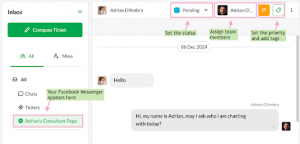There’s a well-known theory in business and sales, it’s far easier to sell more to an existing customer than it is to find a new one. It’s well-known because in most cases, it’s true.
Getting the most out of your loyal customers is a great way to increase revenue but there are a few common pitfalls that come with the territory.
Knowing what to avoid leads to knowing how to upsell the right way.
A hug in a mug
On his way to work every morning, Jordan stops at a brilliant little hole-in-the-wall coffee shop. It’s conveniently located along his walk from the train station to his work.
As far as Jordan is concerned, it’s a national treasure and the town’s best-kept secret. He stops in every morning, without fail.
The baristas know him by both name and order.

The opportunity
The café sees an opportunity.
To keep Jordan’s business and secure a larger share of his wallet, they decide to leverage the relationship and offer Jordan something new along with his morning coffee.
They ask him if he’d like to try a breakfast muffin with his coffee or maybe a ham and cheese croissant?
“The most important meal of the day.” the owner says. “You gotta eat right, you’re here every day anyway. This one’s on me.”
The café knows if they can convince Jordan to grab a little something extra a few days a week and still maintain the great relationship they have with him, it’s a win-win situation.
The result
Upselling to an existing customer or customer base is one of the keys to sales success.
There’s no need to dip into your marketing budget. The customer is already aware of you, your brand and your product or service. You have a relationship with them. You have their trust.
You couldn’t be in a better position.
All you have to do is to suggest another of your products that they might like. It’s a recipe for success.
So what are the biggest mistakes you can make in upselling?
1. Treating your customers as data
The reason you have the opportunity to upsell an existing customer in the first place is because you’ve built a relationship with them.
The fastest way to ruin this is to treat them purely as a number. With no personal connection.
Treating your customers as people, with a little bit of care and respect will help maintain the relationship or better yet, make it stronger, making sure they stay a customer.
Always keep your their best interests at heart, particularly in the services industry. It can give you more opportunities to upsell in the future, whether it’s to the customers you have now, or future customers won over by the reputation you create for your business.
The relationship is the most important thing you have, if what your selling isn’t right for the customer, don’t push it on them. Honesty goes a long way.
Don’t let this stop you from making the offer though. If you already have a sense they won’t be interested, it’s still worth having the discussion. Phrase it as an opportunity and ask them if they think it will benefit them.
Awareness is the first step to any sale. Give them the opportunity to find out what you offer and give yourself the opportunity to either make the sale or show you care enough about them to ask.

2. Making assumptions
Another common mistake is assuming your customer’s situation has stayed the same and they’ll just carry on buying or using your product or services as they always have.
People change. Situations change. Needs change.
If your customers have ongoing contracts with you, asking them if their needs have changed is not only crucial to keeping your offering relevant, it gives you opportunities to meet new needs and discover ways to improve.
Ask your customers, is your product or service still meeting their needs? What would they change if they could? Are there other related needs that you might be able to help with?
Assuming everything is the same leaves the door open for a competitor and robs you of the chance to strengthen your relationship.
3. The sneaky upsell
You have a trusting relationship with your customers. In some cases, it may have taken years to build. Don’t throw it away by trying to squeeze everything you can out of them with surprising new charges for additional inclusions.
Never try to sign them up for something without telling them first! Always be upfront, clear and transparent with your customers on changes to your product or service.
Have you ever stayed at a hotel and found something you didn’t expect on the bill? The first reaction is never positive.
If your payment model changes, let your customers know and tell them why.
If you can, consider grandfathering in your current customers and make sure to make a big song and dance about doing it. If you’re the kind of business that treats people right, you deserve the goodwill you’ll create by doing so.
4. Leading with the sale
Never start the conversation with the potential sale. Before anyone buys something, they need to be sold. That means they need to see the benefits first.
A tried and true method you can always fall back on works in three simple steps.
Problem
Agitate
Solution
Get to the root of their problem, put yourself in the customer’s shoes and point out what they need.
Then stir it up a bit, what heartache does the problem cause? How annoying is it and how is it impacting them.
Next, it’s time to go over the benefits of what you’re selling and explain how it solves the issues you mentioned.
Finally, it’s time to make the offer.
If you follow these four steps, you’ll likely find not only are you making more money through upselling, you’re creating better relationships with the customers you have.
If you do it right, they’ll become advocates and start bringing new customers your way.





